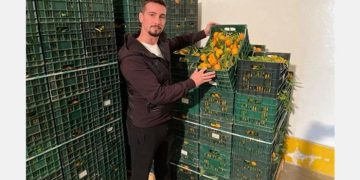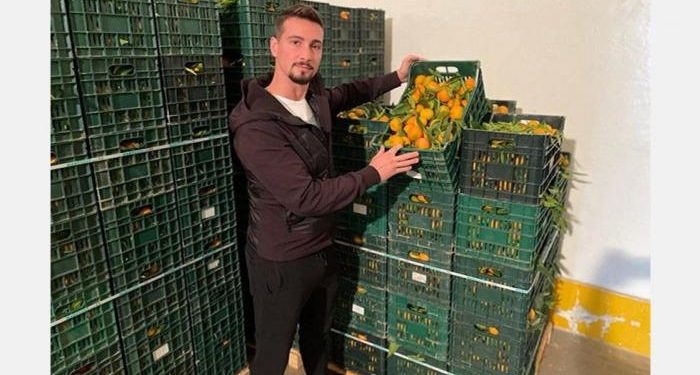Martucci, a company from the southern Italian region of Apulia that has been packing and marketing citrus fruits since 1980, started the new season of Comune clementines last week. Sales director Daniele Martucci gives us some further explanation.
Sorting line for Comune clementines in the packing station of Martucci
“We started about two weeks later than in previous years because of the warm and dry weather. Sales are more than satisfactory in these first days. Demand is very high. I remain optimistic, despite the fact that everyone is complaining about the economic crisis , the uncertainty and lower consumer spending. But the fresh produce sector has been struggling for years. I am sure that we can also meet the current challenges,” says the manager of this packing station in the province of Taranto.
“The traders have just had a bad grape season. So they don’t have too much confidence in the sale of citrus. But in my opinion citrus is a completely different product. At the moment there is not such a wide range of fruit in the market. If that is the case in the summer, citrus is often among the best-selling products, for various reasons. I see that happening again this year.”
 Daniele Martucci
Daniele Martucci
The demand for clementines of the Comune variety is high and the prices also seem satisfactory. “In this first part of the season we send 10 pallets a day to the Italian wholesale markets, but at the end of last week we also started the first export to other European countries. First to France, and then also to Poland and Hungary, for example. As far as prices are concerned, we pay growers about € 0.70 to € 0.80 per kilo.”
In order to cope with the cost increase, the growers are asking higher prices than in previous years. “We traders realize that costs have increased and that is why we are willing to pay a few cents more to the growers. We have pointed out to all customers that the fruit will cost more this year, not only because of the higher cultivation costs, but also because of the increasing costs in the packing station, with more expensive energy and packaging. Everyone has been understanding, including customers in the countries with a lower purchasing power where the citrus is often sold at very low prices.”
As for sizing, Martucci says that the lack of precipitation in the growing phase has led to smaller sizes. “The average calibers range from IV to II, but that’s not really a big problem, because we will certainly succeed in selling a large part in the countries that usually demand smaller sizes for economic reasons.”































